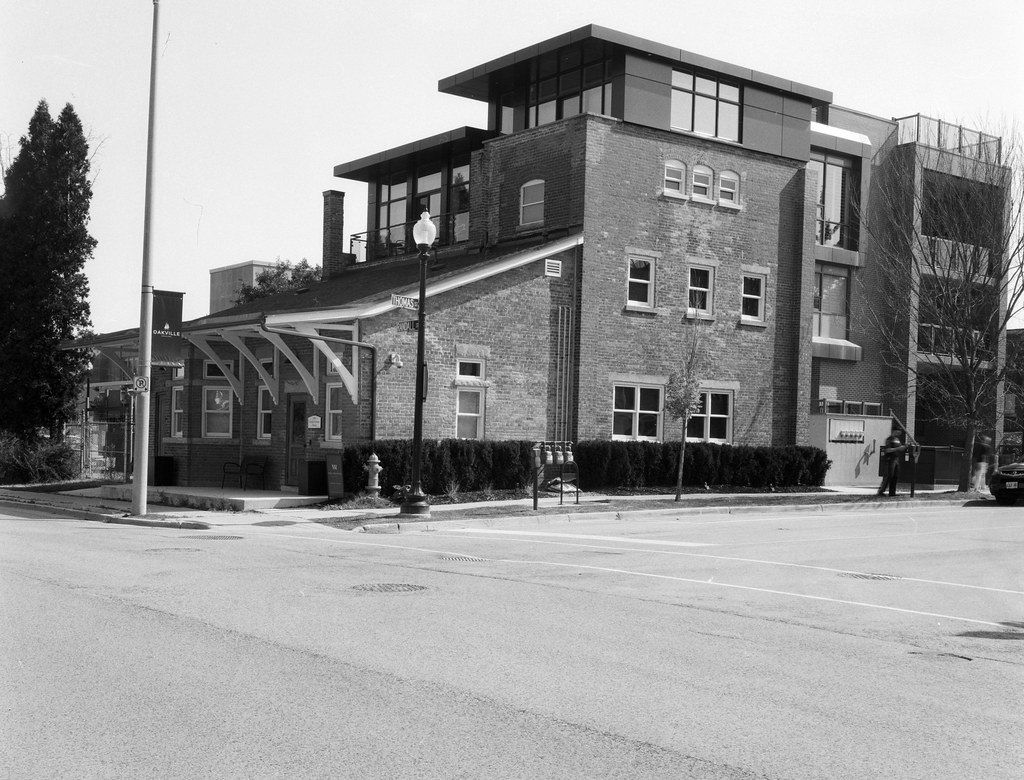The central railways offered long-distance travel but lacked the local service that many in Oakville and around Ontario needed. Personal automobiles were not a thing, and most roads were still dirt, with only a few paved in any meaningful way. Enter the Interurban railways, also known as radial railways. These small-scale services travelled out from a central station, radiating into surrounding communities. And provided some of the earliest forms of mass transit in the province.

The earliest radial railway operators began services in 1890; these systems were used to steam or electrical motive power. Running small, often single carriage trails along a preset route from a main station to an endpoint and then back on a regular schedule. While the citizens of Oakville did have access to a significant railway corridor, the station was 2.5 kilometres from the centre of town, which in the late 19th century was a considerable undertaking on foot. An interurban station near the town’s core could come from either Toronto or Hamilton, both of which had interurban operators. The Hamilton Radial Electric Railway Company, chartered in 1892, had a grand plan to build a radial system from Hamilton to Mount Forest, Elmira, Brantford, and Oakville. But the charter lapsed, and the line was never even started. A second attempt in 1894 ended in a similar failure. Fresh capital and a change in operating and network saw a revamped HRER get off the ground in 1896. The goal was to build a line from downtown Hamilton to Toronto by building out to Clarkson and linking with a radial line from the Toronto & York Radial Railway. It took a bit of work to figure out a route from downtown Hamilton, but construction began slowly; power was provided by a pair of steam generators in Burlington. And the line arrived in Burlington in 1897 and pushed further east, passing through Bronte and finally arriving in Oakville by 1906. In Oakville, HRER completed a station, electrical substation and car shop at the intersection of Randall and Thomas. But by this point, the Toronto & York line never materialised beyond Port Credit. And by 1907, the line was up and running regularly, and ridership remained high, creating the need to build a second line to ensure timely and regular service. But the demand for interurbans was falling; the introduction of automobiles, improved roads and provincial highways in the 1920s moved people to other forms of transportation. The Oakville to Burlington branch shut down in 1925, and the entire network by 1929. The tracks were quickly torn up, and the infrastructure was removed. The Oakville Station became the headquarters of Oakville’s public works and then a commercial space. Most recently, the old station underwent renovations and restorations to become a small condo building.
My discovery of the HRER station was an accident. I decided to walk a different way into downtown Oakville and was drawn to the building. Despite its renovations, it still clearly looked like a railway station. But with no tracks in the area, I figured it had been moved, but after some looking, it, sure enough, is in the original location. I marked it as a potential for my railway project, but more exciting subjects took place. And when I put this project together, I was stuck in the radial railway connection in Oakville. I set up the camera kitty-corner to the station and used my 150mm lens to get in close, some front rise to get the modern additions included but without losing the historical elements. I should have moved the camera a little more to the left and levelled it out better, but overall I’m happy with the exposure and composition. If you want to explore Halton’s light rail heritage, the Halton Radial Railway Museum is the place to visit.